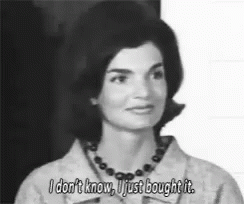Ask Not Why I’m Screaming: The Kennedy Legacy Is Even Uglier Than You Think
I’m not easily rattled. I’ve read memoirs that should’ve come with a trigger warning. I’ve covered stories soaked in scandal. Most so-called shocking nonfiction? Predictable. Processed. Forgettable.
But Ask Not: The Kennedys and the Women They Destroyed by Maureen Callahan?
It cracked something open.
This isn’t biography—it’s exhumation. A line-by-line dismantling of America’s most romanticized political dynasty, told through the voices history tried to erase: the women who got too close.
Camelot Was a Cover Story—Here’s What Was Underneath
We were taught to idolize JFK and Jackie. The perfect couple. Grace under fire. The American fairy tale.
What Callahan reveals is that the Camelot myth was a PR campaign, manufactured to distract from a pattern of abuse, control, and coverup. The Kennedy men didn’t just use their power—they consumed with it. Women were props, perks, or threats to be neutralized. And when it came time to write the story, they got edited out.
Not just a footnote. A deletion.
John F. Kennedy: Charisma Weaponized
It’s no secret that JFK was a womanizer. But what Ask Not lays bare is the sheer scope—and violence—of his behavior.
He slept with teenage interns.
He seduced friends' wives and girlfriends.
He treated the White House like a personal brothel.
These weren’t harmless affairs. Many involved vast power imbalances. Some were orchestrated with the help of staff. And when things got messy, the women took the fall—fired, shamed, or quietly removed.
He wasn’t just cheating. He was conquering.
Bobby Kennedy: The So-Called “Moral One”
RFK was long framed as the conscience of the family. The serious one. The reformer. But Callahan rips that illusion apart.
Bobby, too, was involved with Marilyn Monroe. Bobby, too, knew about the coverups. He played the role of fixer—not just for political scandals, but for family sins. And according to Callahan, his hands weren’t clean. They were strategic.
The question isn’t whether Bobby protected Marilyn. The question is: what was he protecting?
Marilyn Monroe: The Disposable Muse
We know the headlines. The birthday dress. The whispered affairs. The overdose.
What Callahan does differently is give Marilyn back her agency—then show us how it was taken away.
Marilyn wasn’t chasing fame—she already had it.
She wanted answers, not attention.
She was silenced, not saved.
The timeline Callahan lays out is chilling: how quickly Marilyn went from trusted confidante to liability. How the people closest to her disappeared in the days before her death. How the press was manipulated before rigor mortis even set in.
It’s not a conspiracy. It’s a pattern. Power doesn’t erase women—it buries them.
Jackie Kennedy: The Smile That Hid the Scars
Jackie was never just a fashion icon. She was a strategist, a survivor, and a woman holding together a legacy with bloodied hands.
Callahan doesn’t mock Jackie’s silence—she explains it. She was protecting her children. She was protecting her status. And maybe, at times, she was protecting herself.
But silence is never neutral. And Callahan forces us to ask: who did it cost?
Carolyn Bessette: Elegance on the Outside, Erosion Within
Carolyn Bessette-Kennedy has become a kind of ghost-fairy of ‘90s minimalism. The hair. The slip dress. The mystery.
But behind the iconography was a woman in pain.
Callahan traces her descent—how isolation, public scrutiny, and a volatile relationship with JFK Jr. wore her down. Friends witnessed verbal abuse. She became reclusive. There were whispers of separation just before the crash.
The plane crash wasn’t just a tragic accident—it was the endpoint of a toxic cycle no one knew how to interrupt.
If you’re still captivated by the visual mythology she left behind, here are 10 subtle, stylish ways to dress like Carolyn Bessette-Kennedy—without forgetting the woman beneath the wardrobe.
Erased, Edited, and Misremembered: Why Didn’t We Know?
This is the question that echoes through every chapter: why didn’t we know?
Because it wasn’t convenient. Because it didn’t fit the brand. Because women’s pain never gets the PR treatment.
The Kennedys weren’t just powerful—they were untouchable. And when the truth threatened their image, it was redacted.
Not all at once. Quietly. Over time. Until the lie became legacy.
The YouTube Companion You Didn’t Know You Needed
Reading this book feels like being held underwater. Which is why I couldn’t do it alone.
Enter: Cheer Denise, a YouTuber who reads the book chapter by chapter and reacts in real time. Her channel is part read-along, part group therapy, and part investigative sidekick. She gasps when you gasp. She makes connections you hadn’t seen. She validates the rage.
▶️ Watch her read Ask Not here
There’s something powerful about experiencing this book with someone who refuses to gloss over the discomfort. Especially when so many did.
So Where Does That Leave Us?
With rage. With clarity. With a responsibility to stop treating history like a highlight reel for powerful men.
We don’t owe the Kennedys our reverence. We owe the women they destroyed our attention.
Read Ask Not. Talk about it. Challenge the sanitized versions of history you were handed in school and magazines. Ask better questions. Start new conversations.
Because in the wreckage, Maureen Callahan does something powerful.
She doesn’t just show us what was lost.
She shows us what still deserves to be found.
To go deeper, read The Fashion Legacy of Jackie, Joan, and Carolyn—a visual and cultural unpacking of how these women communicated strength, sorrow, and survival through style.
